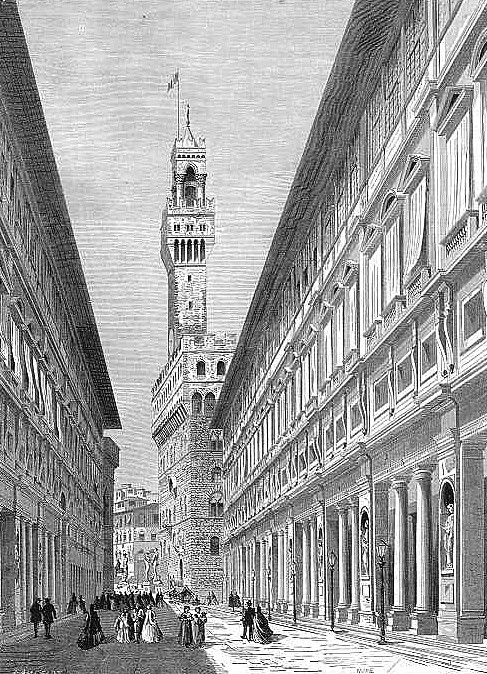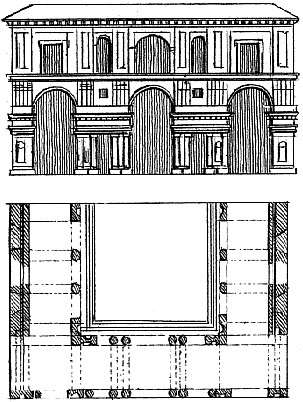Cornelis de Floris
architect and sculptor; b. 1518 ; d. February 20, 1575.
A famous architect and sculptor of Antwerp (Belgium), and a brother of Frans Floris, the painter. Cornells studied in Rome and was architect of the Stadhuis (City Hall) of Antwerp, which was finished in 1560, burned down in 1581, and rebuilt in the same style by another architect. He built the so-called Oosterhuis at Antwerp.
Antoine Fontant
sculptor and architect.
Worked at the château of La Rochefoucauld (Charente) during the second half of the sixteenth century, and his sculptured portrait, with the date 1838, is to be seen in the balustrade of the great staircase, his name being carved in an adjoining panel.
Pellegrino Tibaldi
painter and architect; b. 1527; d. 1598.
Tibaldi began as a painter, the pupil of Danielo da Volterra. He was especially patronized by San Carlo Borromeo at Milan. Tibaldi applied the principles of Vignola to a large number of churches and palaces. In 1560 he began the reconstruction of the façade of the cathedral of Milan. Of this work five doors and five windows remain. He built the fine church of S. Fidele, Milan, begun 1569, the court of the archbishop's palace, Milan, 1570, the Palazzo della Sapienza, Pavia, 1562, the church of S. Gaudenzio, Novara, 1577, the church of S. Francesco da Paolo, Turin, and the court of the University, Bologna, 1570.
| |

Giorgio Vasari, Uffizi (Florence: 1560).
| |

Part of the plan of the building called Uffizi at Florence, with the façade next the Arno; erected from the designs of George Vasari d'Arezzo, born 1512, died in 1574. It is the principal architectural work of this artist, who, the friend and pupil of Michael Angelo, and protected by the Medicis, united to that art the practice of painting, and who further has penned and transmitted to posterity the name, life, and works of those who have professed the arts from the time of their revival to his own time.
Seroux
|